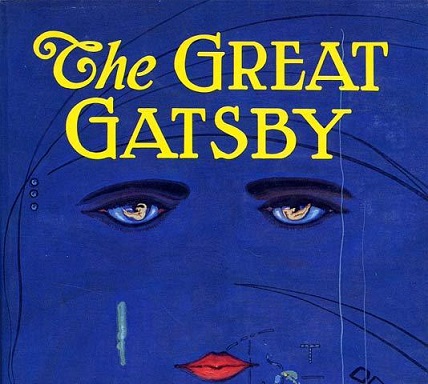Gatsby – Not the Movie

This is not your grandmother’s soap opera. Money, booze, sensual affairs and scandal are only a handful of characteristics readers will find in F. Scott Fitzgerald’s iconic novel: The Great Gatsby.
The book was published in 1925 and is known among most literary circles as Fitzgerald’s masterpiece and is far from old. Set in 1922 Long Island, New York the story takes its readers back to what was known as the “Roaring Twenties.” This decade is also known for Prohibition, and New York with all its flashy lights and illegal alcohol was the place to be.
Enter Gatsby, a rich and mysterious stranger who throws glitzy, extravagant parties in a glamorous time within young America – and you don’t get to know why until you allow yourself to be completely enveloped by the story.
By that time it’s too late, and you’re hooked. You want to know what happens next and get to imagine yourself submerged in the fashion, talk and trends of the 1920s Jazz Age. During the “Roaring Twenties,” the stock market and American economy boomed.
The rich got richer while the poor remained poor and this is one of the topics Fitzgerald touches on mostly because he lived it. The “American Dream” dangled like fruit on a high tree branch and success-starved Americans were hungry for that fruit.
Fitzgerald is quoted in a letter to a friend, “I have never been able to forgive the rich for being rich.”
The ideals expressed in “The Great Gatsby” are largely relevant to modern life today. The book has an amazing storyline that gives its reader a feeling of either nostalgia or déjà vu.
The reason a reader would feel nostalgia is because the reader is transported to an indulging and young time in New York’s history. Everything the author describes sounds fictional but is very real – from the train cars to the skeleton of what will eventually become the Empire State Building.
The reason a reader would feel déjà vu is because of a certain rush that overtakes one’s feelings because what is being described is so relatable, like the excitement of a first love, the heartache when love is lost and the pain of betrayal.
The story is a narration and is seen through the eyes of a character that is not Gatsby, but this character takes you through his life, as he becomes an important part of the story.
The first two chapters are the chapters to engage the reader. It’s quite difficult not to get attached to your favorite characters, but that is the beauty of using your imagination. Any character can be your favorite and any character can become the story’s hero in the eyes of the reader.
Towards the end of the book, I found myself wanting, grasping for more of the story. No, I did not want it to end. I’d grown attached to the entire story and wishing that I could change the ending. A story kept as a treasure to this book-lover including the money, booze, affairs and scandal. However, accepting that I could not change it, instead I grasped at the ending.
I held close my favorite characters and sentences such as, “It was one of those rare smiles with a quality of eternal reassurance in it, that you may come across four or five times in a lifetime.”
Rut Ortiz

